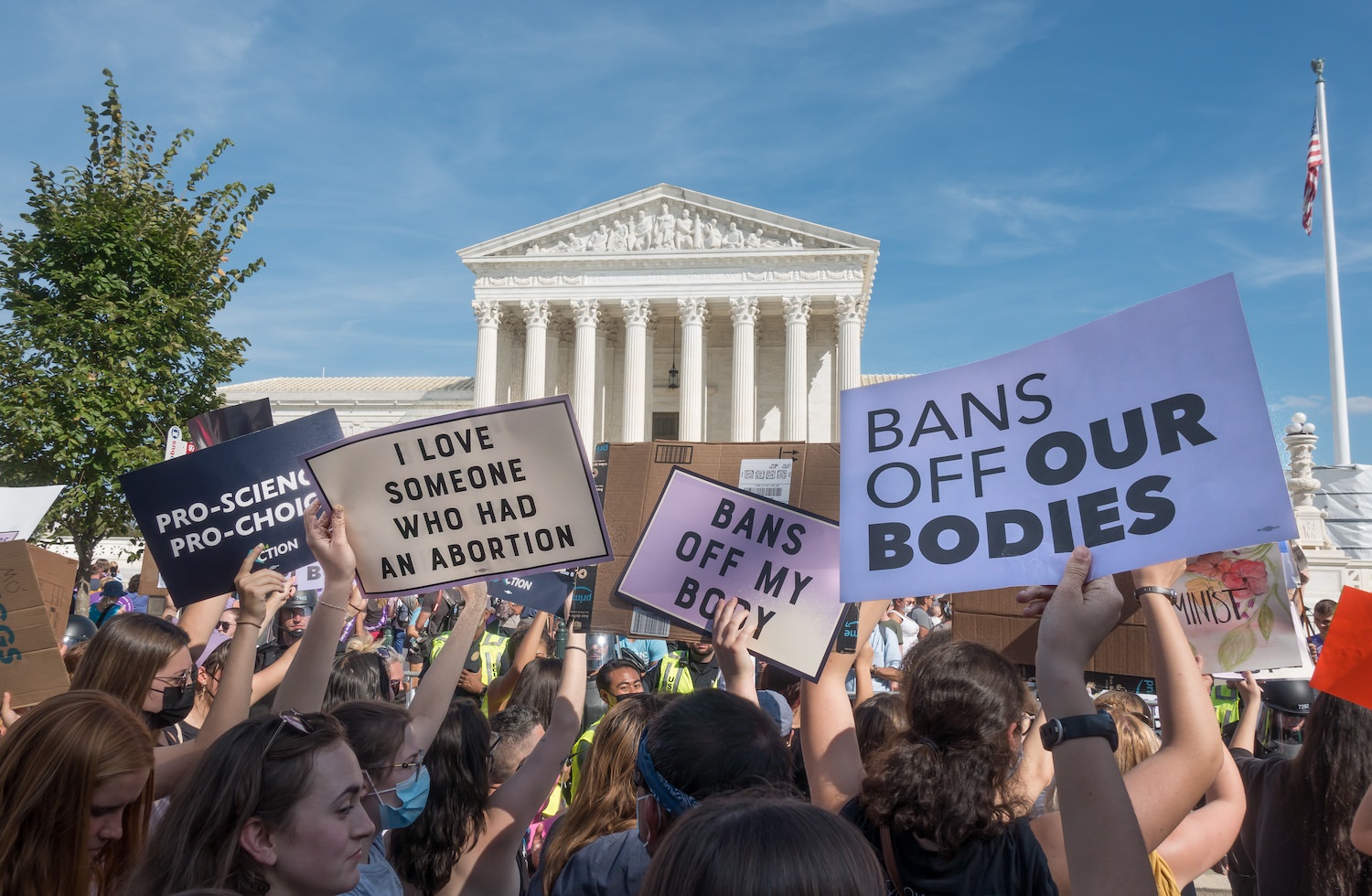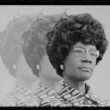The next day, February 14, the brand-new National Association for the Repeal of Abortion Laws (NARAL) held the first-ever abortion- rights conference in Chicago. Amid activists strategizing to repeal state antiabortion laws, Betty Friedan made a passionate proclamation that without reproductive rights women cannot have freedom or equality.
Women’s liberation put the whole issue of abortion on the map. The first Redstockings action took place at a hearing about reforming New York State abortion laws. There were fourteen “experts” on the panel and they were all men except for one Catholic nun. They were giving expert testimony to six male members of the New York State legislature about the implications of reforming the abortion law in New York State.
SUSAN BROWNMILLER
On the morning of the February 13 hearing, a dozen infiltrators camouflaged in dresses and stockings entered the hearing room and spaced themselves around the chamber. They called themselves Redstockings.
ELLEN WILLIS
At the hearing, I was nervous. I had deep feminine inhibitions against being nasty and making myself conspicuous. But as the testimony proceeded—a decrepit judge was advocating legal abortion for women who had “done their social duty” by having four children—my adrenaline rose. Then a member of our cadre got up and shouted, “Okay, now let’s hear from the real experts!” When she finished talking, I started, and I had never felt less inhibited in my life. In another minute, most of the women in the room were angrily demanding to testify. “Won’t you act like ladies?” a legislator pleaded, but no one was listening.
SUSAN BROWNMILLER
Joyce Ravitz began to declaim an impassioned oration. Ellen Willis jumped in. More women rose to their feet.
“Men don’t get pregnant, men don’t bear children. Men just make laws,” a demonstrator bellowed.
“Girls, girls, you’ve made your point. Sit down. I’m on your side,” a legislator urged. Raising the temperature a notch higher.
“Don’t call us girls,” came the unified response. “We are women!”
The hearing dissolved in confusion. When the chairman attempted to reconvene it behind closed doors, the women sat down in the corridor, refusing to budge.
ROSALYN BAXANDALL
They locked us out, and therefore we had our own abortion speak-out at Washington Square church.
BARBARA MEHRHOF
Shulie (Shulamith Firestone) had just come back from Stockholm, where she had attended the international war crimes tribunal where American veterans testified about war crimes they witnessed in Vietnam. Simone de Beauvoir, Jean-Paul Sartre, and James Baldwin were involved in that too.
So Shulie envisioned something like the Stockholm war trials, but around abortion. The idea was women would go public with what they had not ever talked about in private, their own abortions. Well, that really knocked everybody off their chairs. We agreed that sounded like the right action. But how would we find the women who were willing to testify?
ELLEN WILLIS
We decided to hold our own hearing at which women will testify about their abortions. About a dozen women agreed to speak. Many others refused because they are afraid of static from employers or families.
SUSAN BROWNMILLER
When Redstockings did their first abortion speak-out, Irene Peslikis, who was the main organizer, remembered what I had said at that consciousness-raising meeting and got in touch with me. She said, “Would you come and testify at our abortion speak-out?” I said, “I think I’d make a better contribution by writing about it for the Village Voice.” And so I did. And the headline was “Everywoman’s Abortions: ‘The Oppressor Is Man.’” It got on the front page of the Village Voice. 1
BARBARA MEHRHOF
We all wore dresses. Everyone went back to being a woman, so people had lipstick on. Their hair done. They looked so wonderful. They looked great. They just wanted to look professional for this thing.
ALIX KATES SHULMAN
I was not a testifier but I went to it. It was around the corner from where I lived and I told my husband that I was going to the abortion speak-out and he said that I couldn’t speak out because it was his abortion too. We had an argument about it. He said, “You can’t go, don’t go.” But I went because by that time, I did whatever I wanted. Then I wrote The Marriage Agreement. 2 I’ve had four abortions, and they were never because I didn’t use birth control. They were all failures of my diaphragm. I went on the pill briefly, but that was when it was in the early days. It was way too much estrogen. My close friend Barbara Seaman, whose work was in the women’s health movement, said, “Do not take the pill, you’ll get cancer.” So I never was on the pill, except for a very short time before I knew her.
So, I always used a diaphragm. But after my fourth abortion, I said to my doctor, “How can I keep getting pregnant when I always use my diaphragm?” He said, “If the man withdraws his penis and then you start again, because your vagina expands during intercourse, the diaphragm can slip out of place. So, if he’s going to go in again, you have to reinsert your hand and fix it to make sure the diaphragm is in place.” I said, “Why did nobody ever tell me this?” And he said, and I quote, “We can’t tell you everything.”
GLORIA STEINEM
I went to cover the speak-out as a reporter for New York magazine. It was the first time in my life I had ever heard women in public stand up and tell the truth about their lives, parts of their lives that were unacceptable, and just telling the stories, the individual true stories of what it had been like to go out and try to enter a criminal underworld, to endanger yourself, to seek an illegal abortion, all the particular circumstances of each woman.
[I graduated from Smith in 1956] and it was the end of 1956 when I went to London and there—I still didn’t have a visa (to travel to India), so I was waiting for a visa, so I was living with a friend and I was working as a waitress in order to survive there. I was such a terrible waitress. . . . And gradually, I realized that I really was indeed pregnant. I kept hoping it would go away. I kept reading books and thinking I could ride horseback or throw myself down a stair, you know, all these kinds of magical thinking, ridiculous notions one has.
I went to a doctor whose name I found just in the phone book in London, who said yes, probably I was pregnant, and gave me pills which would induce a period if I were not pregnant, and of course they didn’t. I was at my wits’ end. I knew I couldn’t tell Blair (my boyfriend), because then this would be a reason, we had to get married. I certainly couldn’t tell my family. They couldn’t do anything about it anyway. I was quite desperate. I would never, ever, under any circumstances kill myself. But nonetheless, it kind of crossed my mind at that point, because I was so desperate.
Fortunately, just moments before it was too late, I happened to meet an American playwright at some gathering, who was quite an awful man as I remember, and was talking about how he had had to get two of his actresses abortions, because otherwise they couldn’t do his production. I said to him, “How did you do that?” He said, “Oh, well, you know, here it’s against the law, but if you get two doctors to say that it’s against the health or mental health of the woman, you can get permission.” So I went back to the first doctor and did not tell him the truth about it. I told him that the man who was the father did not want to marry me—I didn’t want to admit that it was my doing—and could he help me? He thought for a long time, and he said all right. He said, “I will do this, but you have to promise me two things. You have to never tell anyone my name, and you have to do what you want to do with your life.” I never told anyone, no one—not the woman I was staying with, not anyone—for many, many years, until the women’s movement came along and women began to tell the truth about our lives. But I kept it a secret all that time.
Village Voice, March 27, 1969,
“Everywoman’s Abortions: The ‘Oppressor Is Man,’”
by Susan Brownmiller
Twelve young women faced an audience of more than 300 men and women last Friday evening and with simplicity and calm and occasional emotion and even humor, told of incidents in their personal lives which they formerly had consigned to the very private. They rapped about their own abortions. . . .
The panelists prepared no speeches for the Friday night open meeting. They set up an unobtrusive tape recorder, kept the lights comfortably dim to encourage conversation, and protected their anonymity by using first names only. The result, which could have been exhibitionistic or melodramatic, was neither—it was an honest rap. And it worked.
ALIX KATES SHULMAN
It was fantastic. It was so moving and so brave of these young women because it was criminal and it broke the taboo. After that it was a national conversation, public conversation on television, wherever. It was a great success in that sense. The church was full, and people from the audience got up and spoke. It was wonderful. Did you know that there’s a tape recording of it?
SPEAKER 1
I became pregnant. I slept with a guy during my period and no one ever told me that you could become pregnant when you had your period. The second time (I got pregnant) the guy said, “Well, when I come the second time, the sperms aren’t potent at all and you won’t become pregnant.”
Then the thing about the second abortion that I remember most was this marvelous doctor. I walked in and there was Muzak of Maurice Chevalier going on. He counted the money about five times, looking at it, $700. Then when I got on the table, he said, “You’re no nigger. There’s no reason to scream.” And then he didn’t give me any anesthetic and I didn’t want to get up from the table. And he said, “Look, I have five patients waiting out there.” So I got up from the table and all I felt like doing was being by myself.
So I locked myself in the bathroom there and he sent the nurse in and kept saying, “Look at all these people waiting outside. You must get out of my building.” I mean he was just so concerned with all the other women and all the money he had to make. And I was in the bathroom and finally he got the guy who’d gone with me to convince me to come out of the bathroom.
SPEAKER 2
The reason we have the laws that we have now is because men want to make women suffer for their sin. Like a sin to get pregnant and women are forced to carry an unwanted pregnancy. If you do not want the pregnancy, you are faced with a very clear reality and that is that you are sacrificing your life. When you go to a hotel or when you get into a car on Fifty-Fourth Street and Lexington Avenue and you are blindfolded and taken some place, you don’t know where, you’re not given an anesthetic. The instruments are not even sterilized. You wind up with an infection. You can wind up never being able to have children and this is what women have to go through. This is our debt to society.
And as I said before, we owe society nothing. Society owes us something. And that is to give us the right to decide what we want to do with our own body. The man is the one that screws you and then when you turn to him and say, “Hey, look, sweetheart, I’m pregnant,” “How do you know it was me? You never slept with anyone else?”
SPEAKER 4
You are really alone and you are making arrangements with this weird doctor that’s not a doctor in New Jersey where you have to not park the car on a certain side of the street and not have regular license plates and you start bargaining about money on the telephone and then you have to sign a statement saying that you are having a polyp removed.
And of course, the typical West New York, New Jersey style, I was told the wrong price and so I had to go back and come back the next day with an extra hundred dollars. He really was a very lovely doctor. He had a crucifix in every room and he had a picture of his wife, his family, and all the Italian American societies in West New York, New Jersey, and his wife with a little Madonna around her neck. And they were very sweet. They were very kind. It only cost $900. Of course, I’m still paying off. I went to the bank and I got a vacation loan and I’m still paying that off.
Village Voice, March 27, 1969,
“Everywoman’s Abortions: The ‘Oppressor Is Man,’”
by Susan Brownmiller
At one point in the evening, a young man in the audience arose to ask a question: “You keep talking about a woman’s right to have a legal abortion,” he said. “What about the man’s rights, in or out of wedlock? You didn’t make yourselves pregnant.”
He was told off politely and firmly, “Women have the ultimate control over their own bodies,” a Redstocking told him with the patience a weary teacher uses for a dear but exceptionally slow child. Neither he nor any other male in the hall felt like challenging that simple yet not so obvious statement.
GLORIA STEINEM
I was just so transformed by that—that what happened only to women could be taken seriously; that there were other women who were telling the truth about this. I wrote about it without writing about my own experience. But it transformed me, and I began to seek out all the individuals and books and meetings and everything I could find, of what was then the burgeoning women’s movement.
SUSAN BROWNMILLER
The Redstockings abortion speak-out was an emblematic event for women’s liberation. Speak-outs based on the New York women’s model were organized in other cities within the year. The importance of personal testimony in a public setting, which overthrew the received wisdom of “the experts,” cannot be overestimated. It was an original technique and a powerful ideological tool, and a political act of courage.
Clara Bingham is a journalist, author, and documentary film producer.
Shattering the Abortion Silence is excerpted from The Movement: How Women’s Liberation Transformed America 1963-1973 by Clara Bingham. Reprinted by permission of One Signal Publishers/Atria Books, a Division of Simon & Schuster, Inc.






